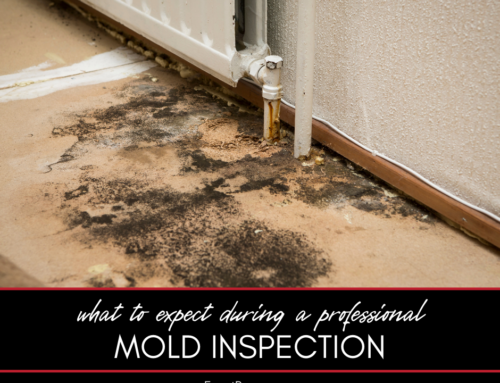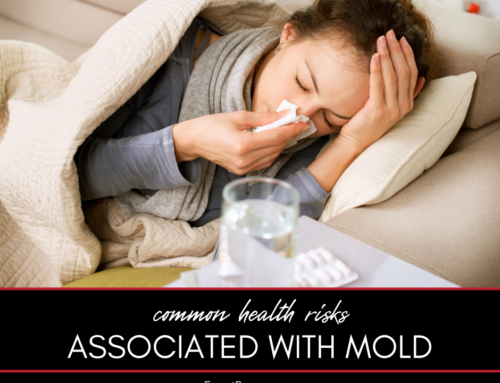Mold is a common problem in many homes, but its presence can pose significant health risks and structural issues. Understanding the impact of mold and how to address it is crucial for maintaining a safe living environment.
How Safe is Your Home if There’s Mold in It?
Mold can affect your home in various ways, from causing health problems to damaging structural integrity. This guide explains the following:
- Understanding mold and its effects
- Health risks associated with mold
- Signs of mold in your home
- Structural damage caused by mold
- Preventing mold growth
- When to call a professional for mold remediation
Here’s a closer look at each.
Understanding Mold and Its Effects
Mold is a type of fungus that thrives in damp, humid environments. It can grow on various surfaces, including walls, ceilings, floors, and furniture. Mold reproduces by releasing spores into the air, which can spread and create new mold colonies. While some molds are harmless, others can produce allergens, irritants, and mycotoxins that can affect your health and home. Understanding the types of mold and their effects can help you take appropriate measures to address the issue.
Related: Expert tips for dealing with water and fire damage, mold and more
Health Risks Associated With Mold
Mold exposure can lead to several health problems, particularly for individuals with respiratory conditions, allergies, or weakened immune systems. Common symptoms of mold exposure include sneezing, coughing, nasal congestion, itchy eyes, and skin rashes. Prolonged exposure to mold can exacerbate asthma symptoms and lead to chronic respiratory issues. In some cases, exposure to toxic molds, such as Stachybotrys chartarum (black mold), can cause more severe health problems, including headaches, fatigue, and neurological issues. If you or your family members experience these symptoms, it’s essential to investigate and address any mold issues in your home.
Signs of Mold in Your Home
Mold can grow in hidden areas, making it difficult to detect. However, several signs can indicate the presence of mold in your home. Look for visible mold growth, which can appear as black, green, white, or even orange spots on walls, ceilings, and other surfaces. A persistent musty odor is another common sign of mold, even if you can’t see it. Water stains, discoloration, and peeling paint on walls and ceilings can also indicate mold growth. If you notice any of these signs, it’s important to take action to prevent further spread and address the underlying moisture issues.
Related: Restoring your business after a natural disaster
Structural Damage Caused by Mold
Mold can cause significant structural damage to your home if left untreated. It can weaken walls, floors, and ceilings, leading to costly repairs. Mold growth on wooden structures, such as beams and joists, can cause wood rot and compromise the integrity of your home’s foundation. Additionally, mold can damage insulation, drywall, and other building materials, leading to further deterioration. Addressing mold issues promptly can prevent extensive structural damage and maintain the safety of your home.
Preventing Mold Growth
Preventing mold growth involves controlling moisture levels in your home. Ensure that your home is well-ventilated, particularly in areas prone to moisture, such as bathrooms, kitchens, and basements. Use exhaust fans and dehumidifiers to reduce humidity levels. Fix any leaks in plumbing, roofs, and windows promptly to prevent water from seeping into walls and ceilings. Regularly clean and inspect areas where mold is likely to grow, such as showers, sinks, and basements. Using mold-resistant materials, such as mold-resistant drywall and paint, can also help prevent mold growth.
Related: How to salvage your belongings after major home damage
When to Call a Professional for Mold Remediation
While small mold problems can sometimes be handled on your own, it’s often best to call a professional for mold remediation. Professionals have the expertise and equipment to thoroughly assess and address mold issues. They can identify hidden mold, ensure proper containment, and use specialized techniques to remove mold and prevent it from returning. Hiring a professional for mold remediation ensures that the problem is addressed safely and effectively, protecting your health and home.
FAQ About Mold and Home Safety
Check out these commonly asked questions about mold and home safety. If you don’t see your question here, please call our office and we’ll find you the answers you need.
Can Mold Cause Long-Term Health Problems?
Yes, prolonged exposure to mold can cause long-term health problems, especially for individuals with respiratory conditions or weakened immune systems. Symptoms can include chronic respiratory issues, asthma, and neurological problems.
How Can I Test for Mold in My Home?
You can test for mold in your home using mold test kits available at hardware stores. However, for accurate results and comprehensive testing, it’s best to hire a professional mold inspector.
Is Mold Only a Problem in Older Homes?
No, mold can affect homes of any age. Newer homes can also have mold issues if there are leaks, high humidity levels, or poor ventilation.
What Should I Do If I Find Mold in My Home?
If you find mold in your home, clean small areas with a mixture of water and bleach or a commercial mold cleaner. For larger infestations or if you suspect hidden mold, it’s best to call a professional for remediation.
Related: Creating a disaster preparedness kit for your home
Can Mold Grow in Cold Climates Like Michigan?
Yes, mold can grow in cold climates if there is sufficient moisture and humidity. Ensuring proper insulation, ventilation, and moisture control can help prevent mold growth in cold climates.
Do You Need a Disaster Remediation Expert in Washtenaw County or Jackson County?
If your home has already been damaged, we can help. Check out our services and call Exact Recon for your free disaster remediation quote today. We offer:









